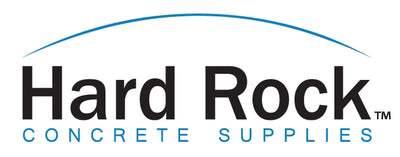QUIKRETE Advanced Polymer Non-Sag Sealant is a non-shrink weather-resistant, high performance advanced polymer sealant formulated to fill cracks and joints in concrete, in interior or exterior areas up to 1 inch (25.4 mm) in width. QUIKRETE® Advanced Polymer Non-Sag Sealant is UV resistant, adheres to concrete, brick, masonry, wood, glass, vinyl, and most plastics and is compatible with SBS flashing. QUIKRETE® Advanced Polymer Non-Sag Sealant is ready-to-use and cures upon contact with the moisture in the air to
form a durable flexible seal.
QUIKRETE® Advanced Polymer Non-Sag Sealant may be used for:
-
Sealing & Waterproofing horizontal or vertical control joints or expansion joints in sidewalks, driveways, industrial floors, parking decks, etc.
- Caulking around window or door openings
- Sealing skylights and chimney flashings
- Environmentally friendly – solvent & isocyanate-free
SIZES
QUIKRETE Advanced Polymer Non-Sag Sealant is available in gray 10 oz (295 mL) tubes.
YIELD
10 oz (295 mL) tube will fill approximately 12 linear feet (3.6 m) in 1/2 in (13 mm) wide by 1/4 in (6.3 mm) deep joint .
TECHNICAL DATA
QUIKRETE Advanced Polymer Non-Sag Sealant meets performance requirements of ASTM C 920, Type S, Grade NS, Class 25, Use NT, A, G, and M; TT-S-0230C, Type II, Class A; CSA CAN/CGSB 19.13-M87. Meets VOC requirements in all regions.
QUIKRETE Advanced Polymer Non-Sag Sealant, when tested in accordance with standard procedures, provides typical results as listed in Table 1.
TABLE 1 TYPICAL PHYSICAL PROPERTIES
| Tack-Free Time at 77°F (25°C), 50% RH
|
60 minutes
|
Cure Rate at 77°F (25°C) , 50% RH
|
¼ in (6.3 mm) at 24 hours
|
Dynamic Joint Movement
|
+/- 25%
|
Durometer Hardness, Shore A
|
30 to 40
|
Ultimate Tensile Strength
|
205 psi (1.4 MPa)
|
Elongation
|
350% to 450%
|
INSTALLATION
NOTE: It is recommended that impervious gloves – such as nitrile be worn during application. QUIKRETE® Advanced Polymer Non-Sag Sealant is difficult to remove from skin and clothing. If sealant gets on skin, immediately wipe off with a dry cloth. Use only in well- ventilated, exterior areas. Before handling read Safety Data Sheet.
SURFACE PREPARATION
The key to long-term sealant performance is proper substrate preparation. The substrate must be clean, frost free, sound and free of any oils, greases, or incompatible sealers, paints or coatings that may interfere with adhesion and good joint performance.
Porous surfaces should be cleaned of dirt, dust loose debris and other potential bond breakers. Mechanical methods, such as wire brushes, grinders, etc. may be required to remove surface contamination, debris and failed sealants such as in re-caulking applications. Make sure to wear proper personal protection equipment when sanding or grinding.
JOINT DESIGN
A thin bead of sealant will accommodate more movement than a thick bead. Working joint depths should never exceed ½ in (13 mm) or be thinner than 1/4 in (6.3 mm). For best results, the ratio of joint width to depth should be 2 to 1. Joints should be designed or cut to work well within the movement capability of the sealant allowing for erection
and installation tolerances, time of year of installation and sealant movement capability. QUIKRETE® Backer Rod (No. 6917) should be used depending on application, to prevent three sided adhesion and to prevent joint depths from exceeding ½ in (13 mm). If joint depth does not allow for backer rod installation, use polyethylene bond breaker tape.
METHOD OF APPLICATION
Avoid applying sealants below 40 °F (4 °C) unless following specific instructions for cold weather caulking. Also avoid applying sealants in ambient conditions where threat of rain is imminent. If ambient temperatures exceed 85 °F (29 °C) and particularly when substrates will be exposed to direct sunlight, check surface temperatures to be sure they don’t exceed the maximum application temperature of 95 oF (35 oC). Mask adjacent surfaces to be sealed if necessary to ensure neat sealant lines and minimize clean up. Avoid placing masking in areas to be sealed. Remove masking immediately after placing
sealant. Remove nozzle by twisting counterclockwise. Cut the tip of the tube without removing any of the threads for the nozzle. Reattach the nozzle and cut the tip of the nozzle to the desired size. Using a caulk gun, dispense sealant with the nozzle near the bottom of the joint to avoid trapping air during placement.
VOC Content: 9 g/L
CLEAN UP
Remove from skin or tools immediately. Cured material is verydifficult to remove. May use rubbing alcohol cautiously on skin. Uncured material can be removed from tools and surfaces with solvents such as alcohol, citrus removers or nail polish remover. Employ solvents cautiously; solvents are flammable; follow with soap and water as appropriate. Cured material may be removed mechanically. Avoid contact with strong acids and oxidizers.
CURING
Allow sealant to cure for a minimum of 2 hours before painting with a water-based latex paint and to cure for a minimum of 3 days before exposing to traffic. Allow 7 days to cure for temporary water immersion applications. Typical full cure in 3 to 7 days. Low humidity, cooler temperatures, and non-porous substrates will lengthen these times.
PRECAUTIONS
WEAR IMPERVIOUS GLOVES, such as nitrile, and eye protection.
Service Temperature: -90 oF (-68 oC) to 425 oF (218 oC)
Application Temperature: 40 oF (4 oC) to 95 oF (35 oC)
Storage Temperature: 40 oF (4 oC) to 75 oF (24 oC)
Do not apply over silicones or other existing sealants. Do not apply to frozen surfaces. Avoid contact with alcohol and solvents during cure. Avoid contact with strong acids and alkalis. Avoid joints that are too deep. Joints between non-porous substrates require slightly longer cure-through time depending on surface area. Do not apply if rain is
expected before sealant has partially cured. Wash skin and hands after use. Not recommended for aquariums and marine applications. Read SDS @ www.quikrete.com
DATA SHEET DOWNLOADS




